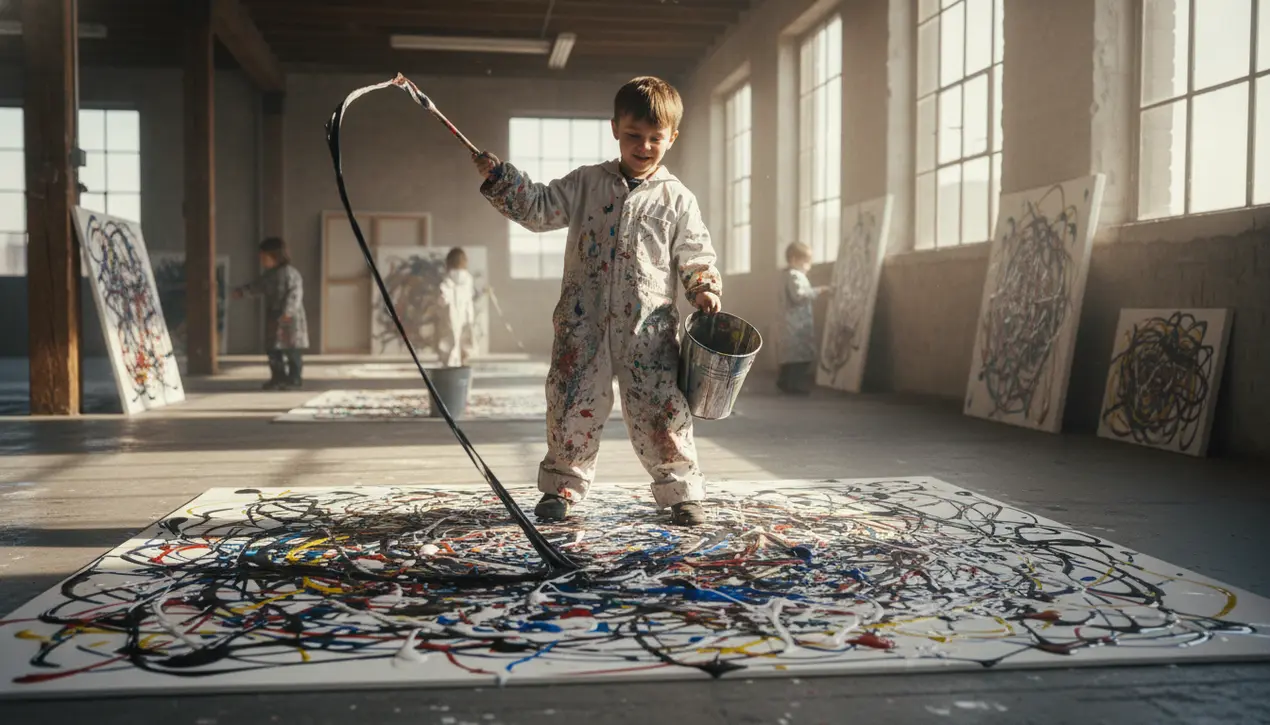
Entertainmenttheatre & artsArt Exhibitions
Children Can Emulate Jackson Pollock's Painting Style.
SO
Sophia King
2 days ago7 min read2 comments
In a fascinating twist that challenges our conventional understanding of artistic development, a new study reveals that children possess a remarkable, almost innate ability to emulate the chaotic genius of Jackson Pollock's drip-painting style, often outperforming their adult counterparts in capturing its raw, uncalculated energy. This research, emerging from the intersection of cognitive science and art theory, suggests that the very cognitive constraints we shed as we mature—the overthinking, the desire for control, the fear of mess—are the very barriers that prevent us from accessing the kind of intuitive, process-driven mark-making that defines Abstract Expressionism.Pollock’s revolutionary technique, famously involving the rhythmic flinging, pouring, and dripping of industrial enamel paint onto canvases laid flat on the floor of his Long Island studio, was not merely a method but a philosophy; it was an attempt to bypass conscious composition and tap directly into the subconscious, a visual representation of automatic writing. Where adults approach a canvas with a lifetime of accumulated rules about what constitutes 'good' art—straight lines, recognizable forms, a coherent narrative—children, particularly those in the early developmental stage before formal schooling imposes structure, operate from a place of pure kinetic response.They are not painting a picture; they are engaging in an event, a physical dialogue with the material where the arc of a swing, the flick of a wrist, and the sheer joy of splatter become the sole authors of the final piece. This study meticulously observed participants across age groups, providing them with similar tools to Pollock—sticks, hardened brushes, and syringes for pouring—and found that the children’s works were consistently rated by a panel of art historians as more authentically 'Pollock-like' in their dynamic balance, their all-over composition, and their fearless embrace of chance and accident.This isn't to say the children were creating masterpieces on par with 'Lavender Mist' or 'Autumn Rhythm,' but they were capturing the essential *algorithm* of his creativity, a generative process that values the journey over the destination. For those of us in the UX and creative tech space, this finding resonates deeply with the current explosion of AI art tools like Midjourney and RunwayML, where the most compelling outputs often come from prompts that embrace randomness and abstract concepts rather than rigid, photorealistic specifications.The child, in this context, is the ultimate prompt engineer for a Pollock-style generator, understanding intuitively that the system’s output is a collaboration between intention and entropy. This research forces a re-evaluation of art education, which often prioritizes technical skill and representational accuracy over the cultivation of this innate, process-oriented creativity, effectively training the Pollock out of us. It suggests that the next great frontier in human-AI co-creation may not be in teaching machines to be more like adult humans, but in helping adults rediscover how to think—and paint—a little more like children, reclaiming that lost fluency in the beautiful, chaotic language of pure, unmediated expression.
#featured
#art study
#children
#Jackson Pollock
#artistic style
#creativity
#psychology
#art education
Stay Informed. Act Smarter.
Get weekly highlights, major headlines, and expert insights — then put your knowledge to work in our live prediction markets.
Comments
Loading comments...
© 2025 Outpoll Service LTD. All rights reserved.